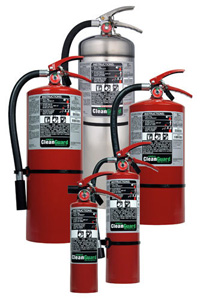| The Home page of ILPI's Safety Data Sheet (SDS) Resource, the leader in SDS information since 1995! | |
| The history and philosophy behind this resource. | |
| A curated collection of books and reference materials concerning Safety Data Sheets and closely related topics. | |
| Paste your plain text SDS into the SDS-Demystifier, and it will be converted into a hypertext-enriched document with links to detailed explanations of each key term. | |
| An extensive list of frequently asked questions about Safety Data Sheets including regulations, content, compliance, and more. | |
| A humorous take on Safety Data Sheet jargon. Fill in the blanks on our entry form to generate a personalized Unsafety Data Sheet to share with your coworkers. | |
| Since 1995, we've maintained this massive curated list of the best places to find Safety Data Sheets on the Internet. | |
| You are here! Way more than a glossary, this hypertext-enhanced resource covers hundreds of SDS-related terms and expert knowledge. Each entry includes both the SDS relevance and links to additional authoritative resources. | |
| Archived results of Safety Data Sheet related polls taken by some of our millions of site visitors | |
| The OSHA regulations behind SDS regulations, including the inspection guidelines and over 400 official interpretations letters under the Hazard Communication Standard | |
| Commercial suppliers of SDS authoring and management software as well as cloud compliance services. | |
| Commercial companies that will create SDS's for your specific needs as well as SDS translation companies. |

Safety signs, banners, and scoreboards? Get yours at Safety Emporium!
Definition

Fire safety includes fire signs, tags and labels from Safety Emporium.
Smoke generally refers to a visible mixture of products given off by the incomplete combustion of an organic substance such as wood, coal, fuel oil etc.. This airborne mixture generally contains small particles (dusts) of carbon, hydrocarbons, ash etc. as well as vapors such as carbon monoxide, carbon dioxide, and water vapor. Liquid droplets may also be present in the mixture.
The term "smoke" is closely related to "fumes". Smoke is generally reserved for products of combustion, however the two are sometimes used interchangeably. In general use, any cloud of fine particles can be referred to as a smoke.
Soot refers specifically to the fine, black, carbonaceous (carbon-containing) particles produced by incomplete combustion of an organic material. Soot can be airborne or collect on a surface such as a chimney or flue liner. Soot can contain carcinogenic compounds such as polycyclic aromatic hydrocarbons and is a flammable material, so treat it with respect!
Additional Information
Smoke inhalation is the most common cause of death in fires. The toxic gases released in a fire usually kill the victim, not burns. Inhalation of smoke not only causes damage to your respiratory system, but has systemic effects as well.
Deliberate smoke inhalation (i.e. smoking) results in the premature death of over 450,000 Americans (and over 3 million world-wide) EACH YEAR. Do yourself, friends, and family a favor and don't engage in this absurdly dangerous practice or patronize companies that sell such products.
SDS Relevance

Protect your workplace with clean agent fire extinguishers from Safety Emporium.
This term usually appears on Section 5 (fire-fighting measures) or Section 10 (stability and reactivity) of a Safety Data Sheet in the context of a fire or other chemical reaction involving the material. Like fumes, multiple hazards are presented by smoke. One must not only protect against harmful vapors, but inhalation of the dust component as well.
Always try to control or eliminate the generation of smoke in the first place. Use appropriate local exhaust ventilation such as fume hoods and always use proper personal protective equipment (PPE) if the smoke is not controlled by these other methods.
Further Reading
- Smoke Inhalation, a multi-page resource at eMedicineHealth.
- What to Do When You or Someone You Know May Have Breathed in Too Much Smoke at Healthline.com.
- Smoke Inhalation Injury from BJA Education 2015, 15(3), 143-148.
- Smoke Inhalation Injury: Etiopathogenesis, Diagnosis, and Management from Indian J Crit Care Med 2018, 22(3), 180-188.
- Smoke Inhalation at WebMD.
- Inhalation Injuries at the NIH's MedlinePlus medical encyclopedia.
- A brief review of smoke inhalation injury at The Pediatric Critical Care Medicine Website.
See also: dust, fume, respiratory, vapor, ventilation
Additional definitions from Google and OneLook.